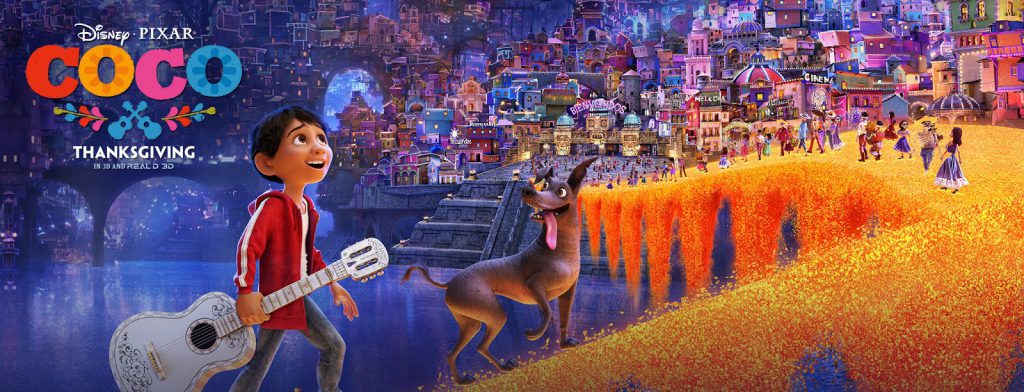In the last two decades, Pixar has arguably created some of the best animated movies ever made. Some of these masterpieces are Finding Nemo, Wall-E, Monsters Inc., Ratatouille, The Incredibles, Inside out, and the Toy Story trilogy.
By creating lovable characters and incorporating the latest digital technologies to take the power of storytelling to new heights, Pixar’s movies succeed in captivating their audience.
The success of Coco, the latest animation produced by Pixar Animation Studios and released by Walt Disney Pictures, thus comes as no surprise.
Coco is directed by Lee Unkrich and produced by Darla K. Anderson, both of whom have previously collaborated to create the enormously successful Toy Story 3. Unsurprisingly, Unkrich and Anderson have delivered yet another incredible movie with Coco. It is Pixar’s return to glory after the dismal Finding Dory, and the disappointing (yet visually impressive) The Good Dinosaur.
Coco tells the story of Miguel, a young boy who dreams of becoming a musician despite his family’s wishes. He wants to follow in the footsteps of the famous guitarist, Ernesto de la Cruz.
What follows is the journey of Miguel to self-discovery during Mexico’s Día de los Muertos ( The Day of the Dead) festival.
“The Day of the Dead” is a Mexican holiday that dates back 3,000 years, during which the souls of the departed return from the afterlife to reunite with their loved ones. It is a huge celebration, where families across Mexico gather in cemeteries and public areas to honor their deceased loved ones in many forms, such as the building of altars. This celebration also incorporates music, dancing, and prayers.
Miguel mistakenly opens a bridge to the Land of the Dead, where he meets some new friends along the way like the charming Hector, voiced by Gael Garcia Bernal.
As Miguel begins his journey back home, there are plenty of surprises and twists along the way. Miguel discovers his family’s complicated history, uncovers hidden secrets, and comes to know how these revelations lead back to his great-great grandmother, Coco.
Coco is rich in vibrant colors and sounds that celebrate Mexican culture. Pixar’s animators have taken several research trips to Mexico to accurately depict their characters, which can be observed through the incorporation of intricate details of rich history into a beautifully made film. It is rare to see this kind of celebration of Mexican culture in animated films, with the most recent celebration seen in the 2014 movie, The Book of Life.
In addition to the fantastic animation and visual effects, Coco boasts an engaging story, wonderful characters, magical creatures, and high quality music. Coco is filled with beautifully designed characters such as skeletons with bright festive colors, and creatures inspired by Mexican alebrijes (spirit animals) such as the gorgeous wildcat with birdlike wings, Pepita, and Dante, Miguel’s loyal dog, who provides some comic relief.
A special mention also goes out to the remarkable Latino voice talent, which includes Anthony Gonzalez, Gael Garcia Bernal, Benjamin Bratt, Alanna Ubach, and Edward James Olmos.
Coco captures the audience’s imagination not only with laughs, but with heartwarming moments as well. A particularly beautiful stand-out moment takes place in a scene near the end of the movie between Miguel and Coco, which will bring even the toughest watcher to tears.
Most notably, Coco succeeds in showcasing themes that are familiar to most fans of Pixar’s movies, such as following your dreams, trusting your gut, the power of empathy, and valuing culture, heritage, and family above all else.
Pixar has done it again. Coco is not to be missed.
The verdict: One of 2017’s best movies, and a must-see for any animation fan.
